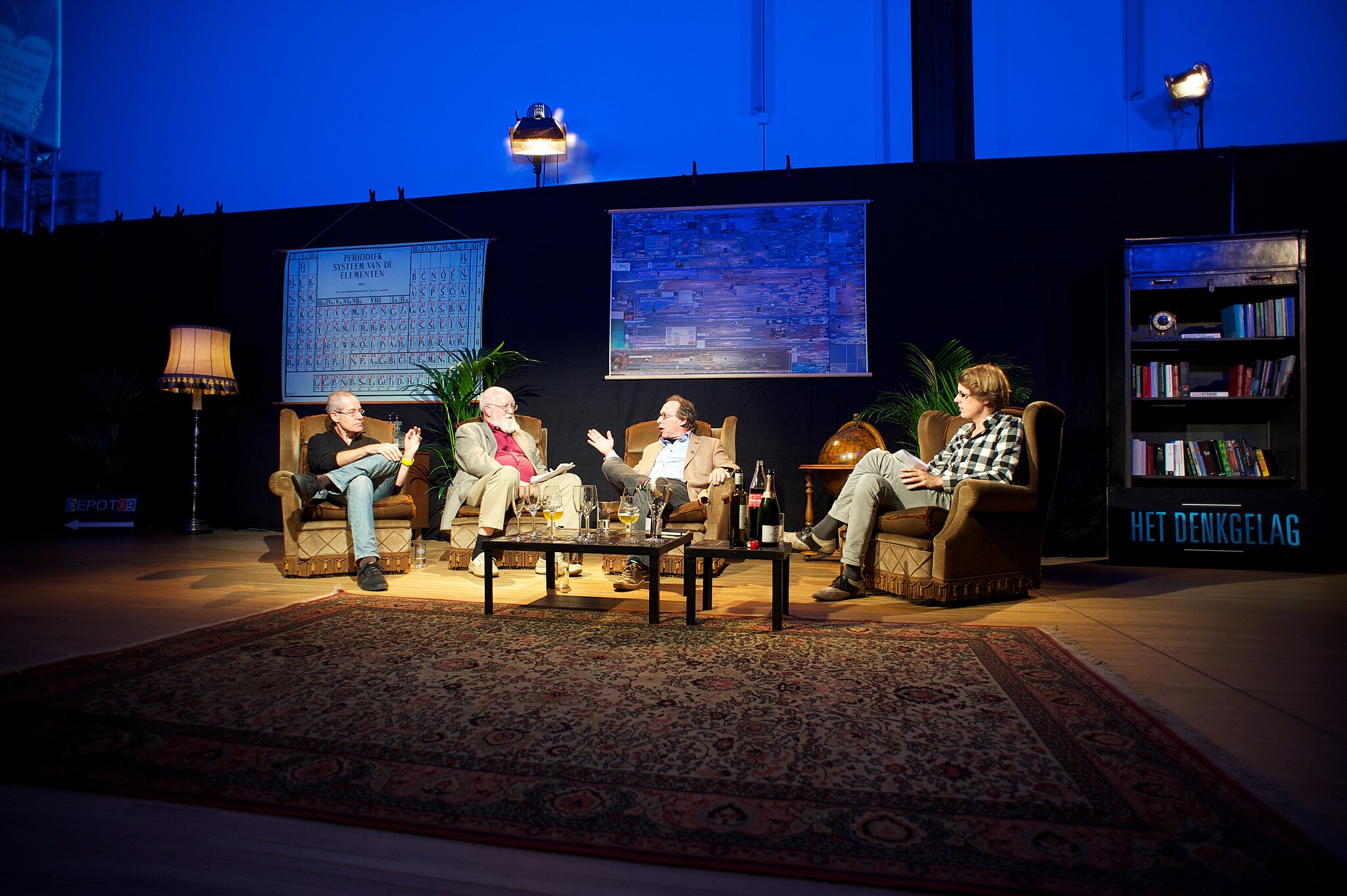3 brilliant critical thinking tools used by Daniel Dennett

- An important question to ask yourself is, “What if I’m wrong?”
- “Occam’s razor” helps you shave the unnecessary junk from your ideas, while “Occam’s broom” helps you see relevant facts others may be sweeping under the rug.
- While Dennett recommends these tools, he adds that engaging with others is vital for uncovering the best explanations for how things truly work.
Daniel Dennett spent his career as a philosopher studying the mind, but by his own admission, he was always more of an engineer at heart. His intellectual drive was an ever-present enthusiasm for explaining how things worked and why they happen as they do. Like a boy tinkering with his favorite toys, he wanted to open up ideas to see how all the cognitive gears, springs, and sprockets ticked.
Inevitably, that led him to converse, debate, and argue with some of the world’s brightest thinkers on an array of profound and complex problems. And he discovered that people aren’t always the best at seeing the flaws in their thinking — even if thinking is their whole professional deal.
As he told Big Think in an interview: “A lot of people just dig in, double down, and refuse to abandon a point of view which is under attack from their critics. That in itself is not a bad thing. I’m glad that my criticisms are resisted so resolutely and ferociously by some of those I criticize. Otherwise, we’d never get at the truth.”
However, he added, “I think it’s very important to keep, in the back of your mind, ‘What if I’m wrong?’”
While an uncomfortable question to ponder, that chink of intellectual self-doubt is key to critical thinking — the willingness and ability to think carefully about what you read, hear, and believe about the world. Once open to thinking critically, we then need the cognitive tools necessary to take apart ideas and information to see if the purported explanations work the way we believe they do.
Dennett sadly passed away earlier this year, but during his long career, he spoke and wrote avidly about the cognitive tools we can sharpen to enhance our thinking. Here are three he shared with Big Think in his final interview with us.
#1: Occam’s razor
For hundreds of years, “Occam’s razor” has been a go-to in any critical thinker’s mental toolbox. Also known as the “principle of parsimony,” this heuristic (read: a mental shortcut) is often summarized as: “When you have two competing explanations for the same phenomenon, the simpler one is the better.”
Although the heuristic’s namesake is William of Ockham — a 14th-century theologian and Franciscan friar — scientists and philosophers have advocated versions of the idea for centuries. Their ranks have included ancient thinkers such as Aristotle, Ptolemy, and Thomas Aquinas, and more modern physicists such as Isaac Newton, Ernst Mach, and Stephen Hawking.
But for our money, Dennett stated the heuristic at its pithiest: “No superfluous junk added into the theory.” (Please and thank you.)
Occam’s razor isn’t just useful for cracking tough philosophical nuts. It can help us cut through everyday quandaries, too. For instance, following the September 11 terrorist attacks, many possible explanations for why and how the attacks occurred began to spread through books, official channels, late-night radio programs, and the then-newish internet. Here are two such explanations:
- Islamist extremists hijacked four planes on September 11, 2001. They flew two of them into the sides of the Twin Towers of the World Trade Center, one into the Pentagon, and a fourth crashed in Pennsylvania.
- United States authorities rigged the Twin Towers with explosives in advance of September 11, 2001. They then issued an air-defense stand-down on the day and launched missiles to destroy the Towers and the Pentagon. To hide the assault, they disguised the missiles with holograms to look like planes. They then blamed the attacks on Islamist extremists as a pretense to start a war in the Middle East. And they did all of this while keeping the hundreds of necessary co-conspirators quiet.
We obviously picked an extreme conspiracy theory to illustrate our point — though it’s worth noting that people did, and still do, believe something like scenario two actually happened. Even so, the comparison shows Occam’s razor at work. The second scenario is a Rube Goldberg machine of an explanation. Too many assumptions are taken as self-evident and too much must go right for its shady masterminds to be realistic. Meanwhile, the first scenario covers all the known facts with fewer moving parts.
In situations like these, Occam’s razor can help you avoid fallacies, simplify problems, or spot misinformation and conspiracy theories. It’s not infallible, of course. Sometimes the truth is complex, such as the byzantine political machinations underlying the Iran-Contra scandal. But even then, shaving off the excess junk gets you closer to the truth than simply going with whatever idea sounds most appealing to you.
#2: Occam’s broom
“Occam’s broom” is another cognitive tool named for everyone’s favorite 14th-century Franciscan, but while it is attributed to William, he didn’t formally formulate this one either. The heuristic has more modern origins, being invented in the 20th century by the molecular biologist Sydney Brenner, who viewed it as an “anti-thinking tool” to complement the famed razor.
According to Dennett, Occam’s broom is used to describe people’s tendency to sweep relevant facts “under the rug.” No doubt you’ve experienced Occam’s broom in an argument before — when the other person simply refuses to engage with a fact you’ve laid out in favor of your side. And we’ve all guilty of brushing aside an inconvenient fact or two ourselves.
I think the best advice to give to the non-expert when confronted with a dubious theory is a little modesty.
Daniel Dennett
However, Dennett warns that the pile of rug-hidden facts aren’t always obvious. They can be easy to overlook if you aren’t an expert in the field they pertain to.
Returning to our 9/11 conspiracy theory, many people argue that the crashed planes wouldn’t have been sufficient to take down the Twin Towers. Jet fuel, they argue, can’t burn hot enough to melt the steel beams the Towers used for support. Therefore, it had to have been a missile aided by planted explosives.
Now unless you’re an engineer, you probably won’t know the melting point of an industrial-grade steel beam off hand. So, when someone tells you that jet fuel can’t burn that hot, you’d be forgiven for wondering if there’s some truth in the claim. What do you do in such a moment?
“I think the best advice to give to the non-expert when confronted with a dubious theory is a little modesty,” Dennett said. “Recognize that you’re not an expert, and since you’re not an expert, there are all sorts of things that might be very obvious to an expert that you just would never imagine.”
That’s exactly what we find with our 9/11 conspiracy. In a special report, MIT engineering professor Thomas Eagar and Christopher Musso, then a graduate student, laid out the evidence and showed that steel begins to distort and lose strength at temperatures far below melting (softening at 425°C). Such deformation proved more than enough to cause some floors to buckle and collapse, resulting in a domino effect.
As Eagar and Musso wrote in their report: “A basic engineering assessment of the design of the World Trade Center dispels many of the myths about its collapse. […] As scientists and engineers, we must not succumb to speculative thinking when a tragedy such as this occurs. Quantitative reasoning can help sort fact from fiction, and can help us learn from this unfortunate disaster.”

#3: Engage with others
Philosophers often work by themselves, sitting in their studies and quietly working out a problem in exquisite detail. Sometimes, Dennett tells us, this process bears fruit and profound explanations are reached. He argues that these are the exceptions though. Not the rule.
More often, the best ideas and explanations we have come from those willing to question, work with, and engage alongside others. Socrates showed this in philosophy with his Socratic method more than 2,000 years ago, and science is the ultimate team effort. Even those luminaries we see as unrivaled geniuses, such as Albert Einstein, conversed with others to help them reach their biggest discoveries.
So, don’t be afraid to ask people questions. If someone tries to shut down the conversation by asking a rhetorical question, answer the question honestly instead. And instead of seeing arguments as winner-take-all debates, approach them as collaborative learning experiences. Even if you ultimately don’t see eye to eye, you hone your own ideas by sharpening them against the criticisms of others.
As Dennett told us: “Talking it over [and] asking each other questions is a great way of making progress. It’s kind of surprising in a way because if none of you know what the answer is, what good is it asking each other questions? But sometimes you sort of know the answers. You just have to dig them out and that takes hard work.”





